Spinal Muscular Atrophy (SMA) is a genetic disorder that causes muscle weakness and atrophy as a result of the loss of motor neurons in the spinal cord. Motor neurons are nerve cells that control muscle movement and their loss of function is the root cause of SMA. The disease is caused by genetic mutations, usually passed down from parents, and can significantly affect the daily lives of affected individuals.
According to studies, the common SMA can occur once in every 10,000 live births. The prevalence of SMA varies across different geographical regions and ethnic groups, reflecting the genetic diversity of the disease.
What Causes SMA?
Spinal Muscular Atrophy (SMA) is usually caused by mutations in the ‘survival motor neuron 1′ (SMN1) gene. This gene is responsible for the production of the SMN protein, which is critical for keeping our motor neurons healthy and functional. Unfortunately, mutations or deficiencies in the SMN1 gene lead to insufficient production of this vital protein, which causes motor neurons to stop functioning over time and muscle atrophy.
The inherited nature of SMA is explained by the ‘autosomal recessive’ model. In this case, both parents must be carriers of the mutated gene for a child to be born with SMA. According to statistics, one in every 40 people is a silent carrier of this gene variation. If carrier parents have children, there is a 25% chance that their child will have SMA.
In addition to the SMN1 gene, SMA is also caused by changes in the SMN2 gene. SMN2 has a similar structure to SMN1 and is an additional factor that influences the severity and rate of progression of the disease. The number of copies of the SMN2 gene can affect the range and severity of symptoms seen in different types of SMA.
In rare cases, SMA can also be caused by mutations in genes other than SMN1. Such cases of SMA are often referred to as ‘non-chromosome 5 SMA’ and are associated with different genetic mechanisms.
What are the Symptoms of SMA?
Spinal Muscular Atrophy (SMA) is a genetic condition that can lead to a variety of symptoms in affected individuals. The most prominent symptoms of SMA are decreased muscle strength and muscle atrophy (shrinkage), leading to a decline in motor skills and difficulties with daily movements. Symptoms vary according to the type and individual severity of SMA, but common ones include:
- Muscle weakness and atrophy: Decreased muscle strength, especially in muscle groups near the center of the body, affecting basic motor skills such as sitting and walking.
- Decline in Motor Skills: Over time, affected individuals may experience a decrease in their existing motor skills.
- Decreased Mobility: Muscle weakness can cause difficulties with everyday movements such as walking, standing and sitting.
- Respiratory Problems: Muscle weakness can also affect the respiratory muscles, leading to breathing difficulties.
- Muscle twitches and tremors: In some cases, involuntary muscle twitches and tremors may be observed.
Early diagnosis and intervention are critical in the management of SMA. When any of these symptoms are recognized, it is important to contact a healthcare professional. The earlier the treatment process begins, the greater the positive impact on the individual’s quality of life can be.
How can parents recognize it?
Symptoms of SMA usually appear during childhood, so parents and family members should closely monitor their child’s development. Early signs may include muscle weakness, decline in motor skills and difficulty walking. If parents notice such symptoms in their child, they should contact a health professional immediately.
SMA Types and Characteristics
Spinal Muscular Atrophy (SMA) is usually categorized into four main types based on the age of onset and severity of symptoms:
- Type 1 (Werdnig-Hoffmann Disease): It is the most severe form of SMA and symptoms are usually seen in infancy (before 6 months). Babies have no head control, arm and leg movements and cannot sit without support. They have serious difficulties with basic skills such as sucking and swallowing difficulties and breathing problems. This type can lead to serious complications at an early age, especially because the respiratory muscles are affected.
- Type 2: This type is usually seen in babies aged 6-18 months. Children with type 2 can usually sit but cannot stand or walk unassisted. They have head control and are susceptible to respiratory infections. Scoliosis and limb deformities are characteristic features of this type.
- Type 3 (Kugelberg-Welander Disease): Type 3 usually begins in childhood or early adolescence. These individuals can walk and sit, but muscle weakness and fatigue increase over time. Problems such as falls, inability to run and difficulty climbing stairs may occur. The development of scoliosis is also common for this type.
- Type 4: A form that occurs in adults and is milder than the other types. It is possible for individuals with type 4 to retain mobility throughout life, but may develop mild to moderate muscle weakness over time.
Each type of SMA requires different approaches to disease progression, management and treatment. Early diagnosis and intervention can significantly impact life expectancy and quality, especially in Type 1 and Type 2.
Treatment of SMA Disease
While there is no definitive cure for Spinal Muscular Atrophy (SMA), current treatment methods aim to slow disease progression and alleviate symptoms. The treatment plan is determined by a multidisciplinary approach based on the type of SMA and individual needs:
- Gene Therapy: Directly targets the genetic deficiency that causes SMA. By providing the body with a healthy SMN1 gene, it can help protect motor neurons and improve their function.
- Physical Therapy: Applied to maintain and increase muscle strength, ensure joint mobility and help prevent complications such as scoliosis.
- Nutrition Support: Specialized nutrition plans for patients with swallowing difficulties and feeding tubes may be used when necessary.
- Respiratory Therapy: Various respiratory therapies and devices are used to support respiratory function and prevent respiratory infections.
- Assistive Devices: Wheelchairs, walkers and other assistive devices may be recommended to increase mobility and facilitate activities of daily living.
- Surgical Intervention: Scoliosis certain conditions may require surgical intervention. Surgery is performed to correct spinal curvature and improve respiratory function.
Early intervention is critical in SMA treatment. Starting treatment as soon as the disease is diagnosed can significantly improve the patient’s quality of life and functional abilities. Treatment options and plans are individualized according to the patient’s condition and needs.
Conclusion: What to Know About SMA
SMA is a condition where family history plays a critical role in the recognition and understanding of the disease, as it has a genetic basis. This requires families and health professionals to be aware of recognizing and intervening early in the signs of SMA. Early detection enables timely initiation of treatments that have the potential to slow the progression of SMA and alleviate symptoms, thus creating positive impacts on the quality of life and functional abilities of affected individuals.
When it comes to treatment, multidisciplinary approaches such as gene therapy, physical therapy, nutrition and respiratory support are the cornerstones of SMA management. The use of assistive devices and, if necessary, surgical intervention can be important for individuals to maintain their activities of daily living.
While living with SMA presents significant challenges for individuals and their families, current and emerging treatment options show promise. The combination of early intervention, appropriate treatment strategies and supportive care is critical to manage the disease. It is important that individuals with SMA and their families have access to support and resources as they face life’s challenges.
Frequently Asked Questions About SMA
How is SMA first recognized?
SMA (Spinal Muscular Atrophy) usually presents in infancy or early childhood with symptoms such as muscle weakness and reduced mobility. Early symptoms include difficulties with sucking or swallowing, decreased muscle tone, delayed development, weakness in the arms and legs, and decreased movement. SMA may be suspected when infants are noticed to be unable to hold their head upright or sit unsupported.
Who Mostly Suffers from SMA?
Because SMA is a genetic disorder, anyone can be born with the disease. However, if both parents are carriers of the genetic mutation that causes SMA, their child has a higher risk of developing SMA. The disease is equally likely to occur in any gender or ethnic group, but carrier rates and therefore disease prevalence can vary across geographic and ethnic groups.
How old can SMA be diagnosed?
There are different types of SMA and the symptoms of each type can appear at different ages. Type 1 SMA, the most severe form, usually shows symptoms in the first few months of infancy, while Type 2 and Type 3 SMA symptoms usually appear during childhood. Type 4 SMA may show symptoms for the first time even in adulthood. Therefore, the symptoms of SMA can be evident at any time, depending on age.
Is SMA Disease Predictable?
SMA is usually not detectable in the prenatal period or in the first months of infancy. However, genetic carrier testing and family history can help determine the risk of SMA. For families at risk, genetic testing can be done during pregnancy through amniocentesis or chorionic villus biopsy. These tests can be used to find out if the baby carries SMA.
How is the SMA Test Performed?
SMA is usually diagnosed by observing symptoms and performing genetic tests. Genetic tests confirm the presence of the disease by detecting changes in the SMN1 gene. These tests are performed using blood samples and can often be used to determine the type of disease. Genetic testing can also be used to identify carrier status in family members. Genetic counseling is important to guide and inform families through this process.

